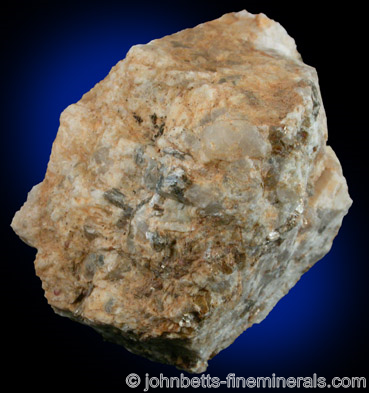The Mineral andesine

Andesine was named after its original occurrence in the Andes Mountains of South America. Andesine belongs to the Plagioclase Feldspar group, an
isomorphous solid solution series. Albite is one member,
containing sodium and no calcium. The other end member, Anorthite,
contains calcium and no sodium. Andesine is an intermediary
member of this series. Andesine is considered by some authorities as a
variety of Albite rather than a separate mineral. The acclaimed
Dana's System of
Mineralogy lists Andesine as an individual mineral,
whereas the IMA does not recognize it as individual mineral
species, but rather a calcium-rich variety of Albite. Andesine is the primary feldspar constituent of the igneous rock Andesite.
Chemical Formula
(Na,Ca)Al1-2Si3-2O8
Color
Colorless, white, cream, yellow, pale green, gray
Properties
Streak
White |
Hardness
6 - 6.5 |
Transparency
Transparent to translucent |
Specific Gravity
2.66 - 2.68 |
Luster
Vitreous to pearly |
Cleavage
2,1 - basal ; 2,1 - prismatic ; 3,1 - pinacoidal The cleavage angle is about 90º |
Fracture
Subconchoidal to uneven |
Tenacity
Brittle |
Crystal Habits
Crystals, which are uncommon, are tabular and frequently twinned. Most often massive, grainy, as chunky masses, and as compact crystal groupings.
Uses
There is a new gemstone called Andesine which has recently penetrated the market. Much of the material is Chinese in origin and has been synthetically diffused to enhance color, and is actually produced from Labradorite.
Noteworthy Localities
Andesine is prevalent in volcanic regions throughout the world. Its original locality in the Andes Mountains is the Marmato District, Manizales, Bolivia. Large crystals are found in the San Gabriel Mountains (Los Angeles County), California. Other localities are the Crestmore Quarry, Riverside County, California; Goodall Farm, Sanford, York County, Maine;
Mont Saint Hilaire, Quebec, Canada; and Portland, Victoria, Australia.
Distingushing Similar Minerals
Potassium Feldspar group - Don't exhibit striations on twinned
crystal surfaces, whereas the Plagioclase feldspars do.
Other
Plagioclase Feldspars - Usually cannot be determined by
practical means.
Spodumene - Has a splintery cleavage.
Calcite
- Much lower hardness.